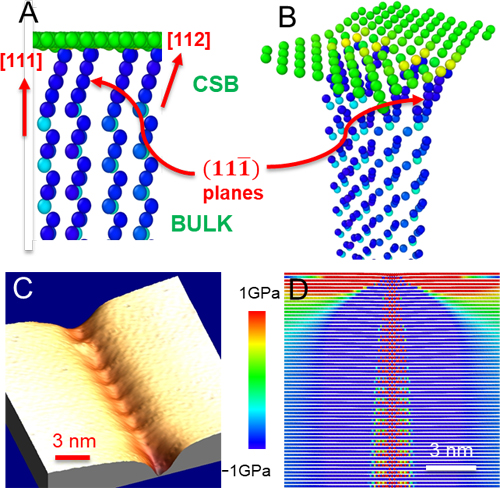报告题目:Emergent grain boundaries at free surfaces - a surface perspective of nanoscale copper films
报 告 人:Xiaopu Zhang (张孝谱), John J. Boland
报告时间:8月21日(星期一)10:00-12:00
报告地点:师昌绪楼403会议室
报告人简介: Xiaopu Zhang received his BSc degree (in applied physics) from Nanjing University of Science and Technology in 2006, and Ph. D (in condensed matter physics) from Nanjing University in 2011. He then works as a researcher till now in CRANN institute at Trinity College Dublin, on different projects such as development of UHV AFM & diamond tips, copper films for interconnect. His current research interests involve the structure and properties of nanoscale copper films.
报告摘要:
The properties of nanocrystalline copper films are controlled by grain boundary defects that are known to play important roles in a diverse range of technologies; from the performance of integrated circuits to electrocatalytic phenomena such as CO2 electroreduction. However, little is known about the structure of boundaries in nanocrystalline films or their behavior as they emerge onto the surfaces of these films.
Using scanning tunneling microscopy, we recently discovered that the adjoining grains that comprise small angle symmetric tilt boundaries on (111) nanocrystalline copper films are always rotated out of the surface plane [1]. Geometry analysis shows a preference for these boundaries to shift their tilt axes (or boundary cores) towards [112] to form low energy core shifted boundaries (CSBs) that then lie in the close-packed  plane. These experimental observations for copper wereconfirmed by molecular statics calculations for all fcc metals [2].
plane. These experimental observations for copper wereconfirmed by molecular statics calculations for all fcc metals [2].
We find for the case of high angle boundaries that there is a local rotation of the adjoining grains at the surfaces of (111) nanocrystalline copper films and macroscopic engineered bicrystals [3]. This local rotation implies the presence of [112] CSBs at the free surface while the boundaries retain their [111] tilt axis deep inside the film (see Figure). To reproduce this structure we developed a novel approach to atomic calculations that involves a methodical shift of the dislocation core, which that confirmed the geometry of emergent boundaries observed in experiment and reconciled the atomic calculations with the elastic analysis through the inclusion of a straight wedge disclination at the free surface[4].

Fig. 1. Relaxed emergent 26.01° core-shift boundary in copper. (A) rotation of [111] axis to [112] to form CSB. (B) perspective view of CSB, (C) STM topography and (D) stress distribution.
References:
[1] X. Zhang, J. Han, J.J. Plombon, A.P. Sutton, D.J. Srolovitz, J.J. Boland, Nanocrystalline copper films are never flat, Science 357(6349) (2017) 397-400.
[2] X. Zhang, J.J. Boland, Universal preference for low-energy core-shifted grain boundaries at the surfaces of fcc metals, Physical Review Research 5(1) (2023) 013223.
[3] X. Zhang, M. Wang, H. Wang, M. Upmanyu, J.J. Boland, Restructuring of emergent grain boundaries at free surfaces – An interplay between core stabilization and elastic stress generation, Acta Mater 242 (2023) 118432.
[4] X. Zhang, I. Demirel, J.J. Boland, Wedge disclination description of emergent core-shifted grain boundaries at free surfaces, Scripta Mater 234 (2023) 115562.

